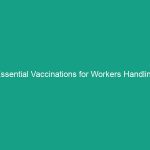Introduction
Good morning team,
Today, we’re diving into an essential topic that directly impacts our Safety and well-being at work: Must-Know Escalation Procedures for Safety Concerns: Reporting Issues. Understanding how to report safety issues efficiently is crucial for maintaining a safe working Environment. Whether you notice a hazard or experience a near-miss, knowing the proper escalation procedures can help prevent accidents and injuries.
Why is this important? Because every one of us plays a vital role in ensuring our workplace is safe. By addressing safety concerns promptly, we not only protect ourselves but also our coworkers and the organization as a whole.
Understanding Must-Know Escalation Procedures for Safety Concerns
So, what exactly are escalation procedures for safety concerns? These are systematic steps that employees should follow when they encounter potential safety Hazards or issues in the workplace. The goal is to ensure that every concern is reported and addressed in a timely manner, minimizing risks and promoting a culture of safety.
Escalation procedures are critical because they:
- Ensure swift action is taken to mitigate risks.
- Establish a clear communication channel for safety concerns.
- Encourage a proactive approach to Workplace Safety.
Common misconceptions about these procedures include the belief that reporting minor issues isn’t necessary or that it might lead to disciplinary actions. Remember, every reported concern contributes to the overall safety of our work environment.
Key Hazards, Risks, and Safety Considerations
Identifying specific hazards is the first step in the escalation process. Here are some common hazards you might encounter:
- Slips, Trips, and Falls: These are among the most frequent causes of workplace injuries. Wet floors, cluttered walkways, and uneven surfaces can pose significant risks.
- Equipment Malfunction: Faulty machinery can lead to serious accidents. Always report any equipment that seems to be malfunctioning.
- Chemical Exposure: Working with hazardous materials requires strict adherence to safety protocols. If you notice any leaks or improper storage, report it immediately.
The real-world consequences of ignoring safety protocols can be severe, leading to injuries, operational downtime, and even legal ramifications for the company. Therefore, it’s crucial to address these risks proactively.
Best Practices, Procedures, & Actionable Advice
Now that we understand what escalation procedures are and why they matter, let’s discuss Best Practices for reporting safety concerns:
1. Identify and Document
As soon as you notice a safety concern, document it. Note the time, location, and nature of the issue. This information will be useful when reporting the concern to your supervisor or safety officer.
2. Report the Issue
Follow your organization’s specific reporting protocol. This typically involves:
- Informing your immediate supervisor.
- Completing any necessary incident report forms.
- Utilizing any safety apps or systems in place for reporting.
Make sure to provide all relevant details to facilitate swift action.
3. Follow Up
After reporting, don’t hesitate to follow up. Check in with your supervisor or the safety officer to ensure the issue is being addressed. This shows your commitment to safety and encourages accountability.
4. Participate in Safety Meetings
Engage in safety meetings and discussions. Share your experiences and any concerns you might have. This promotes a culture of open communication regarding safety.
Case Study: A Real-World Incident
Consider the incident that occurred last year when a worker reported a malfunctioning piece of equipment. The concern was escalated, and the faulty machine was repaired before it caused any injuries. This example illustrates the importance of timely reporting and the positive impact it can have on Workplace Safety.
Regulations, Standards, and Compliance
It’s essential to understand that many safety protocols align with regulatory frameworks such as OSHA (Occupational Safety and Health Administration) standards. Compliance with these Regulations is not just a legal obligation; it is a moral one that prioritizes the health and safety of every employee.
By adhering to these Standards, we can:
- Minimize workplace accidents.
- Enhance employee morale.
- Reduce potential liabilities for the organization.
Employee Engagement & Discussion
Now that we’ve covered the essentials, I’d like to hear from you. What safety challenges have you encountered related to reporting issues? Have you ever felt hesitant to report a concern? Your feedback is invaluable in shaping our safety protocols and procedures.
Conclusion & Key Takeaways
In summary, understanding the Must-Know Escalation Procedures for Safety Concerns: Reporting Issues is crucial for maintaining a safe workplace. By identifying hazards, documenting issues, and following established reporting protocols, we all contribute to a safer work environment.
Let’s commit to prioritizing safety in our daily operations. Thank you for your attention and for your ongoing commitment to making our workplace a safer place for everyone.


